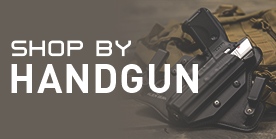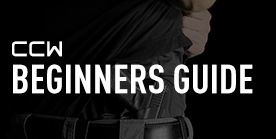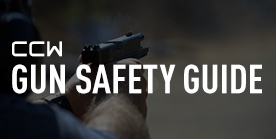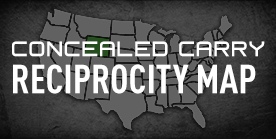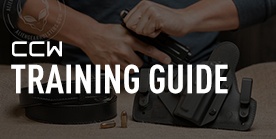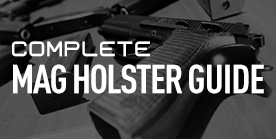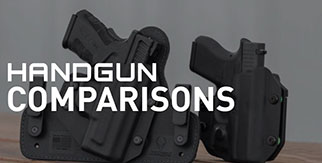
When Is It Justified To Draw Your Firearm?
If you're going to carry a gun in order to possibly defend yourself with it if necessary, it behooves a person to know when and how to do so in accordance with the law. In other words, when can you pull a gun on someone if they are threatening you?
Every concealed carrier should be aware that they are responsible for their actions, no matter how justified they believed their actions to be. Drawing a gun is an act of lethal force, as doing so denotes lethal intent. Those who practice open carry should be just as aware as well. Therefore, drawing a pistol requires justifiable conditions for doing so.
Bear in mind that this is not legal advice, merely a discussion about the topic of legally drawing a firearm in self defense if need be.
Drawing A Gun Is Always Brandishing. Circumstances Justify It Or Don't.
Before we go any further, there's a distinction you need to understand. How all laws governing self-defense work is like this:
Violence is a crime, including and especially lethal or greatly injurious violence. Period. However, if there is greater harm in not committing the act due to the circumstances (the legal term is "necessity") you can be excused from culpability.
Not "it's totally legal to X if Y." It's "you did one of the worst things a person can do, but you did it for good reasons given the circumstances." And that is a distinction you need to understand.
Drawing and pointing a gun at someone is a crime. It's called brandishing and it's defined as displaying a weapon to intimidate, threaten or otherwise impress upon another person that deadly force is imminent.
Conviction of it typically means losing your concealed carry permit and possibly being prohibited from possessing a firearm.
The question is whether or not it's justifiable, and it's only justifiable if you're facing an immediate and credible threat to your life. In those circumstances, drawing the gun saved your and/or someone else's life.
It's Not When You Can Pull A Gun On Someone, It's If You Must
Pointing a gun at someone is assault with a deadly weapon and/or brandishing. It is only excusable if you had no other choice.
Depending on the jurisdiction, any witnesses must conclude that the pistol wasn't drawn or displayed with willful disregard for the safety or well-being of others. Not only must a hypothetical reasonable person do the same thing in the same situation; anyone who saw it must conclude the same thing.
In essence, when you can draw is the same as when you can shoot: if confronted with an imminent threat to your life or that of someone else. Since pulling the gun implies lethal intentions, those intentions have to be justified just as shooting must.
In short, don't draw unless you are fully prepared and intending to fire. If you intend anything less, then you are acting with potentially lethal intentions for less than a clear and present danger to life and limb.
More Instances Of Defensive Gun Use Involve A Draw Than Shooting
What few studies exist on defensive gun use indicate that far, far more instances of DGU involve only the drawing of a weapon than the firing of one. Many defensive uses of a gun go unreported and consist of a threatening person being alerted to the presence of a firearm and then making a hasty retreat.
Justifiable homicides, or the lawful killing of a felonious person in the midst of committing their crimes, only occur a few hundred times per year. While it's impossible to know how many DGUs occur consisting only of a drawn pistol - many instances go unreported - such encounters vastly outnumber defensive uses of a gun where the aggressor is shot.
While you shouldn't draw unless fully preparing and intending to fire, but it may be sufficient to ward off a threat.
CCW Training And Shooting Must Include The Draw
If one is going to conceal and carry, some CCW training and regular shooting practice is essential. Also, how a person shoots at the range should be altered to keep up the skills necessary to be competent with one's carry pistol.
Defensive shooting is not like target shooting. Aiming fire for a bullseye at longer distances will not set one up for success in a defensive scenario; there isn't the time or the distance.
The concealed carrier should ready for shooting up close and personal. That means different aiming techniques, such as point shooting or flash sighting. It also means practicing the draw stroke as much as possible.
Muscle memory will aid a person more than anything else. A practiced draw at the moment of truth will give you more of an advantage over an attacker than almost anything else.
When do you think you should draw your weapon?
Let us know in the comment section below.




